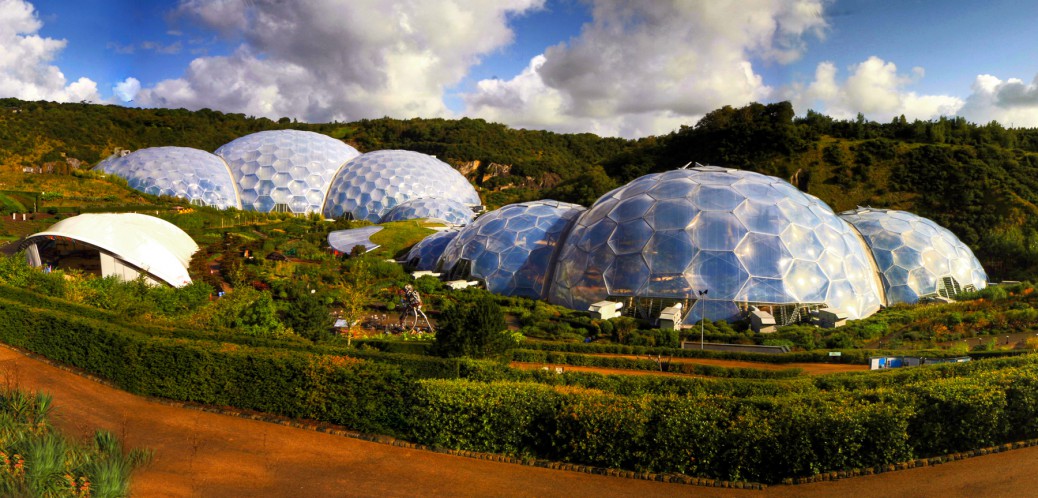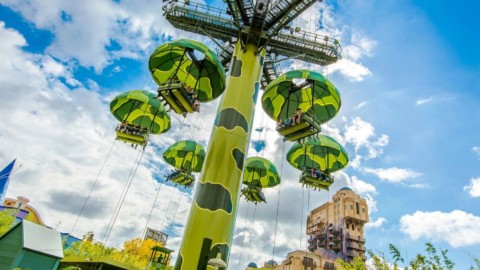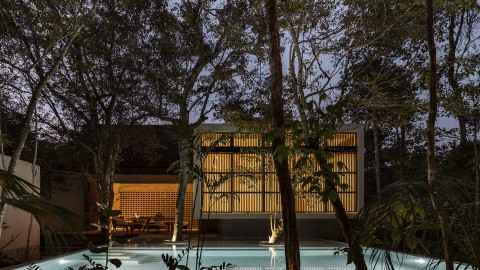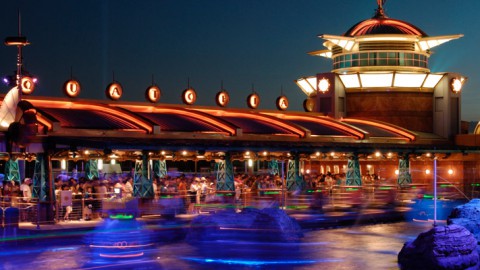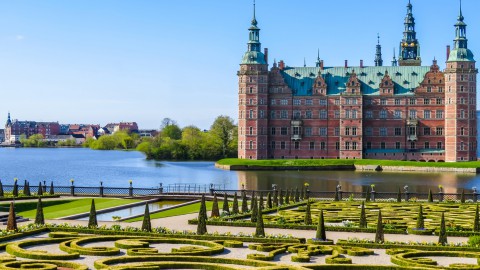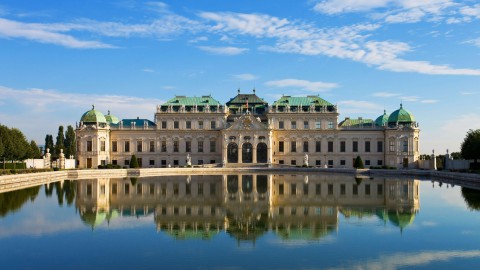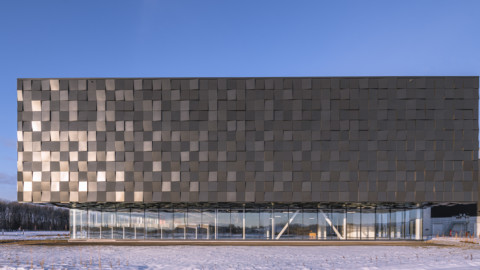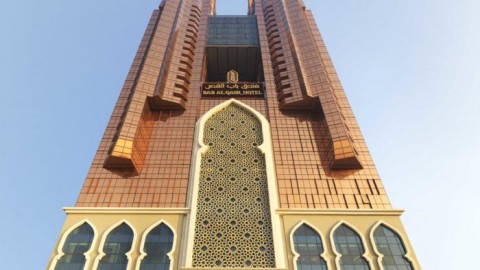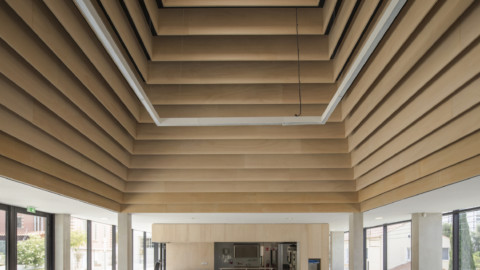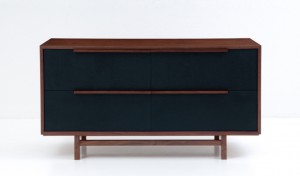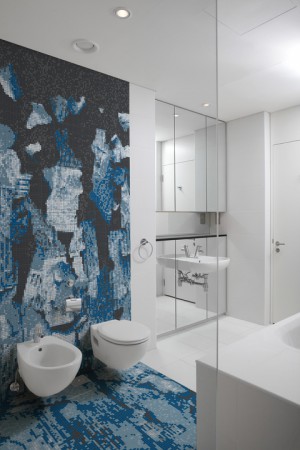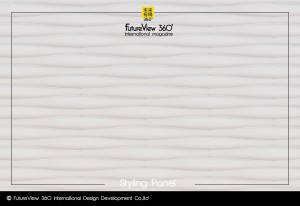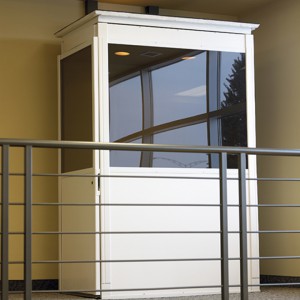Eden Project 伊甸園項目
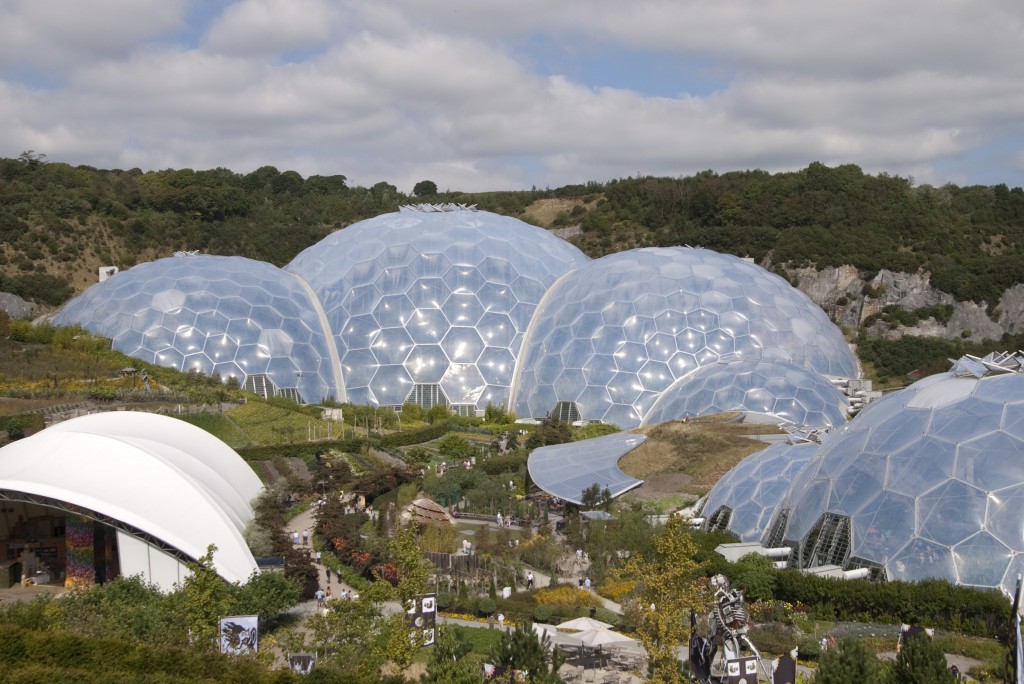
The Eden Project (Cornish: Edenva) is a popular visitor attraction in Cornwall, England, UK. Inside the two biomes are plants that are collected from many diverse climates and environments. The project is located in a reclaimed china clay pit, located 2 km (1.2 mi) from the town of St Blazey and 5 km (3 mi) from the larger town of St Austell.
The complex is dominated by two huge enclosures consisting of adjoining domes that house thousands of plant species, and each enclosure emulates a natural biome. The biomes consist of hundreds of hexagonal and pentagonal, inflated, plastic cells supported by steel frames. The largest of the two biomes simulates a rainforest environment and the second, a Mediterranean environment. The attraction also has an outside botanical garden which is home to many plants and wildlife native to Cornwall and the UK in general; it also has many plants that provide an important and interesting backstory, for example, those with a prehistoric heritage.
There are plans to build an Eden Project North in the seaside town of Morecambe, Lancashire, with a focus on the marine environment.
伊甸園項目(Cornish:Edenva)是英國康沃爾郡的一個受歡迎的旅遊景點。在兩個生物群系內部是從許多不同的氣候和環境中收集的植物。該項目位於一個再生瓷磚坑,距離St Blazey鎮2公里(1.2英里),距離較大的聖奧斯特爾鎮5公里(3英里)。
該綜合體由兩個巨大的圍欄組成,這些圍欄由相鄰的圓頂組成,可容納數千種植物物種,每個圍欄都模仿天然生物群落。生物群係由數百個由鋼框架支撐的六邊形和五邊形膨脹塑料單元組成。兩個生物群落中最大的一個模擬了雨林環境,第二個模擬了地中海環境。該景點還有一個外部植物園,這裡有許多植物和野生動物,一般來自康沃爾郡和英國。它還有許多植物,提供重要而有趣的背景故事,例如那些具有史前遺產的植物。
計劃在蘭開夏郡的海濱小鎮莫克姆(Morecambe)建立一個伊甸園項目北部,重點是海洋環境。
General information
Type:Multiple Greenhouse Complex
Architectural style:Inspired by J. Baldwin’s Pillow Dome
Location:St Blazey, Cornwall, UK
Coordinates:50°21′43″N 4°44′41″WCoordinates: 50°21′43″N 4°44′41″W
Completed:May 2000
Opened:17 March 2001
Technical details
Structural system:Steel frame and thermoplastic
Design and construction
Architect:Nicholas Grimshaw
Structural engineer:Anthony Hunt and Associates
Services engineer:Arup
一般信息
類型:多個溫室複合體
建築風格:靈感來自J. Baldwin的Pillow Dome
地點:英國康沃爾郡St Blazey
坐標:50°21’43“N 4°44’41”W坐標:50°21’43“N 4°44’41”W
完成時間:2000年5月
開放時間:2001年3月17日
技術細節
結構系統:鋼架和熱塑性塑料
設計和施工
建築師:Nicholas Grimshaw
結構工程師:Anthony Hunt and Associates
服務工程師:Arup
History
The clay pit in which the project is sited was in use for over 160 years. In 1981, the pit was used by the BBC as the planet surface of Magrathea in the 1981 TV series of the Hitchhiker’s Guide to the Galaxy. By the mid-1990s the pit was all but exhausted.
The initial idea for the project dates back to 1996, with construction beginning in 1998. The work was hampered by torrential rain in the first few months of the project, and parts of the pit flooded as it sits 15 m (49 ft) below the water table.
The first part of the Eden Project, the visitor centre, opened to the public in May 2000. The first plants began arriving in September of that year, and the full site opened on 17 March 2001.
The Eden Project was used as a filming location for the 2002 James Bond film, Die Another Day. On 2 July 2005 The Eden Project hosted the “Africa Calling” concert of the Live 8 concert series. It has also provided some plants for the British Museum’s Africa garden.
In 2005, the Project launched “A Time of Gifts” for the winter months, November to February. This features an ice rink covering the lake, with a small café/bar attached, as well as a Christmas market. Cornish choirs regularly perform in the biomes.
On 6 December 2007, the Eden Project invited people all over Cornwall to try to break the world record for the biggest ever pub quiz as part of its campaign to bring £50 million of lottery funds to Cornwall.
In December 2007, the project failed in its bid for £50 million of funding, after the Big Lottery Fund popular vote, when it received just 12.07% of the votes, the lowest for the four projects being considered. Eden wanted the money for Edge, a proposed desert biome that was going to look at people and plants living on the edge today and the solutions that they have come up with to the challenge of living within limits.
In December 2009, much of the project, including both greenhouses, became available to navigate through Google Street View.
The Eden Trust revealed a trading loss of £1.3 million for 2012-13, on a turnover of £25.4 million. The Eden Project had posted a surplus of £136,000 for the previous year. In 2014 Eden accounts showed a surplus of £2 million.
The World Pasty Championships have been held at the Eden Project since 2012, an international competition to find the best Cornish pasties and other pasty-type savoury snacks.The Eden Project is said to have contributed over £1 billion to the Cornish economy.
The Eden Project received 1,024,156 visitors in 2017.
歷史
該項目所在的粘土坑已經使用了160多年。 1981年,英國廣播公司將這個坑用作1981年銀河系漫遊指南電視劇中的Magrathea行星表面。到了20世紀90年代中期,這個坑幾乎耗盡了。
該項目最初的想法可以追溯到1996年,從1998年開始施工。該項目最初幾個月的暴雨阻礙了這項工作,並且部分坑位於距離該區域15米(49英尺)處的地方。地下水位。
伊甸園項目的第一部分,即遊客中心,於2000年5月向公眾開放。第一批工廠於當年9月開始運抵,整個工廠於2001年3月17日開放。
伊甸園項目被用作2002年詹姆斯邦德電影“另一天的死亡”的拍攝地點。 2005年7月2日,伊甸園項目舉辦了Live 8音樂會系列的“非洲呼叫”音樂會。它還為大英博物館的非洲花園提供了一些植物。
2005年,該項目在11月至2月的冬季推出了“贈送時間”。這裡設有一個覆蓋湖泊的溜冰場,一個小咖啡館/酒吧以及一個聖誕市場。康沃爾合唱團經常在生物群系中表演。
2007年12月6日,伊甸園項目邀請康沃爾郡各地的人們嘗試打破有史以來最大的酒吧測驗的世界紀錄,作為其向康沃爾提供5000萬英鎊彩票資金的活動的一部分。
2007年12月,在大彩票基金公眾投票之後,該項目未能獲得5000萬英鎊的資金,僅獲得12.07%的選票,是所考慮的四個項目中最低的。 Eden想要資金用於Edge,這是一個擬議的沙漠生物群落,它將關註今天生活在邊緣的人和植物以及他們提出的解決方案,以應對生活在極限內的挑戰。
2009年12月,包括兩個溫室在內的大部分項目都可用於瀏覽Google街景。
伊甸信託公司披露2012-13財年的交易虧損為130萬英鎊,營業額為2540萬英鎊。伊甸園項目去年的盈餘為136,000英鎊。 2014年,伊甸園賬戶顯示盈餘200萬英鎊。
世界肉餡餅錦標賽自2012年以來一直在伊甸園項目舉行,這是一項尋找最佳康沃爾餡餅和其他糊狀鹹味小吃的國際比賽。據說伊甸園項目為康沃爾經濟貢獻了超過10億英鎊。
伊甸園項目在2017年接待了1,024,156名訪客。
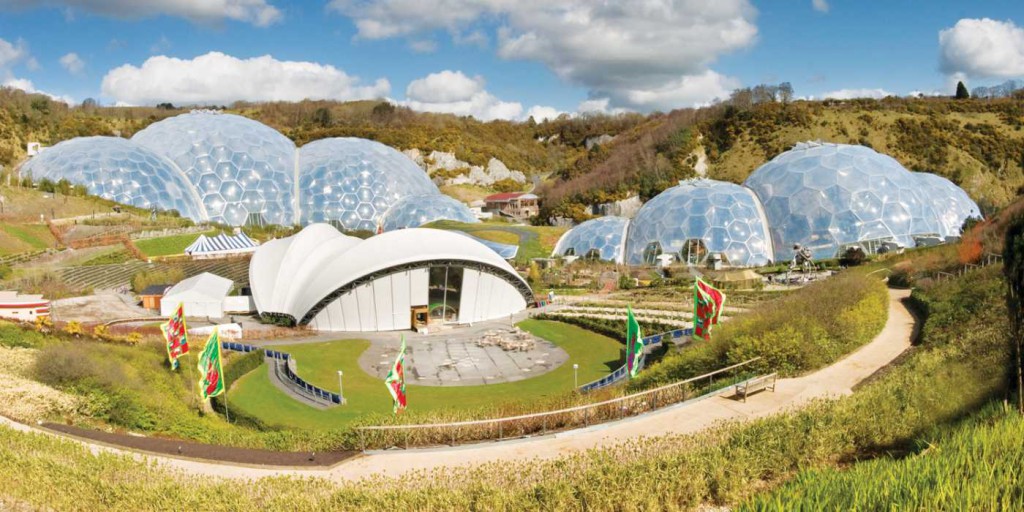
Design and construction
The project was conceived by Tim Smit and designed by architect Nicholas Grimshaw and engineering firm Anthony Hunt and Associates (now part of Sinclair Knight Merz). Davis Langdon carried out the project management, Sir Robert McAlpine and Alfred McAlpine did the construction, MERO designed and built the biomes, and Arup was the services engineer, economic consultant, environmental engineer and transportation engineer. Land use consultants led the masterplan and landscape design. The project took 2½ years to construct and opened to the public on 17 March 2001.
設計和施工
該項目由Tim Smit構思,由建築師Nicholas Grimshaw和工程公司Anthony Hunt and Associates(現為Sinclair Knight Merz的一部分)設計。 Davis Langdon負責項目管理,Robert McAlpine爵士和Alfred McAlpine負責施工,MERO設計並建造了生物群落,Arup是服務工程師,經濟顧問,環境工程師和運輸工程師。 土地使用顧問領導了總體規劃和景觀設計。 該項目耗時2年半,於2001年3月17日建成並向公眾開放。
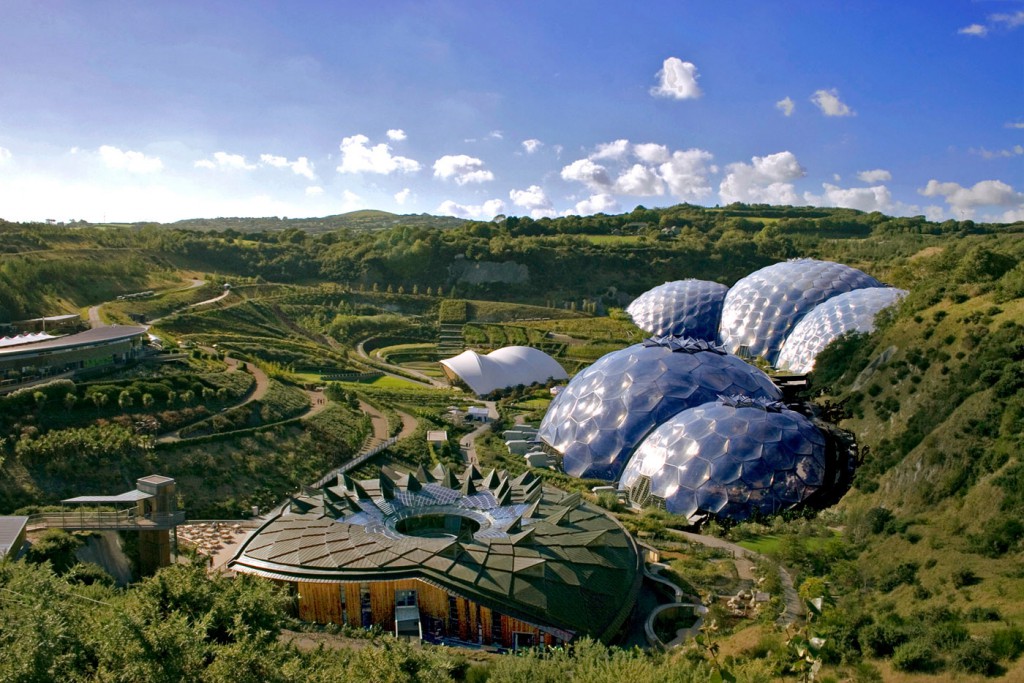
The Core
The Core is the latest addition to the site and opened in September 2005. It provides the Eden Project with an education facility, incorporating classrooms and exhibition spaces designed to help communicate Eden’s central message about the relationship between people and plants. Accordingly, the building has taken its inspiration from plants, most noticeable in the form of the soaring timber roof, which gives the building its distinctive shape.
Grimshaw developed the geometry of the copper-clad roof in collaboration with a sculptor, Peter Randall-Page, and Mike Purvis of structural engineers SKM Anthony Hunts. It is derived from phyllotaxis, which is the mathematical basis for nearly all plant growth; the “opposing spirals” found in many plants such as the seeds in a sunflower’s head, pine cones and pineapples. The copper was obtained from traceable sources, and the Eden Project is working with Rio Tinto Group to explore the possibility of encouraging further traceable supply routes for metals, which would enable users to avoid metals mined unethically. The services and acoustic, mechanical and electrical engineering design was carried out by Buro Happold.
Art at The Core
The Core is also home to art exhibitions throughout the year. A permanent installation entitled Seed, by Peter Randall-Page, occupies the anteroom. Seed is a large, 70 tonne egg-shaped stone installation standing some 13 feet (4.0 m) tall and displaying a complex pattern of protrusions that are based upon the geometric and mathematical principles that underlie plant growth.
核心
核心是該網站的最新成員,於2005年9月開放。它為伊甸園項目提供了一個教育設施,包括教室和展覽空間,旨在幫助傳達伊甸園關於人與植物之間關係的核心信息。因此,建築物從植物中獲取靈感,最引人注目的是高聳的木質屋頂,這使得建築物具有獨特的形狀。
Grimshaw與雕塑家Peter Randall-Page和結構工程師SKM Anthony Hunts的Mike Purvis合作開發了銅包覆屋頂的幾何形狀。它來源於葉序,這是幾乎所有植物生長的數學基礎;在許多植物中發現的“對立螺旋”,例如向日葵頭,松果和菠蘿中的種子。銅來自可追溯的來源,伊甸園項目正在與力拓集團合作,探索鼓勵進一步追溯金屬供應路線的可能性,這將使用戶能夠避免不道德的金屬開採。 Buro Happold負責服務和聲學,機械和電氣工程設計。
核心藝術
核心也是全年藝術展覽的舉辦地。由Peter Randall-Page創作的名為Seed的永久裝置佔據了前廳。種子是一個巨大的,70噸的蛋形石頭裝置,高約13英尺(4.0米),展示了複雜的突起圖案,這些突起基於植物生長的幾何和數學原理。
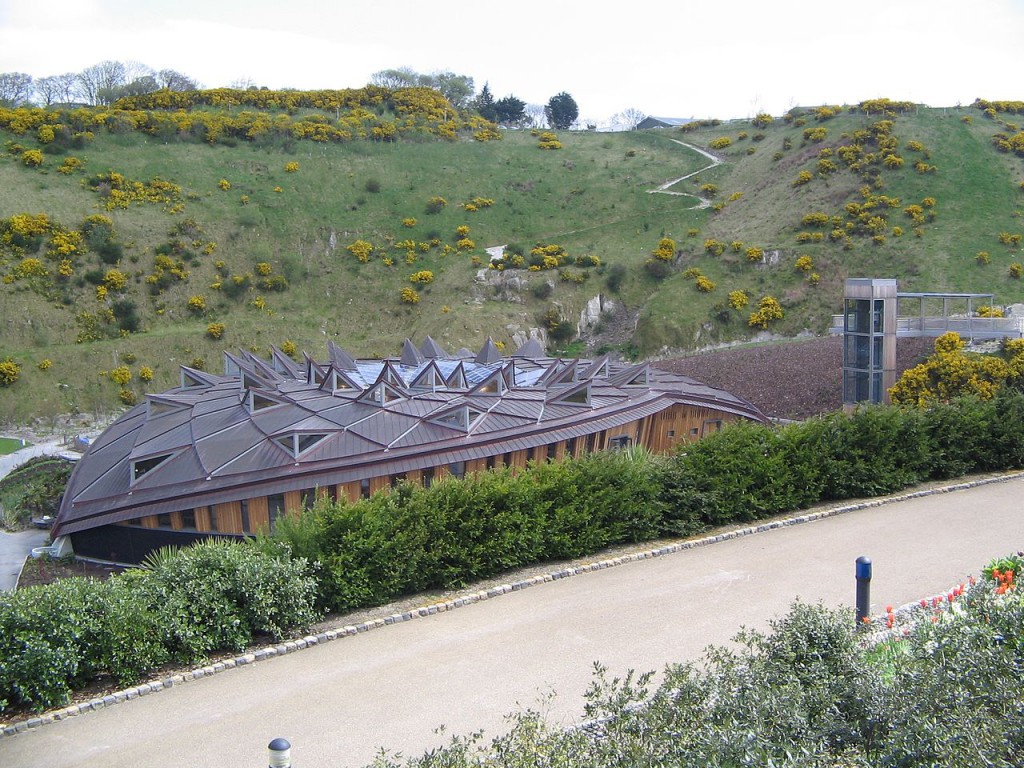

FROM:https://en.wikipedia.org/wiki/Eden_Project
FROM:Eden Project: an overview
FROM:Eden Project: a visit in under a minute
Don’t you think it’s addictive?
Want to know more about the beauty of architecture?
Come and join our members to explore the beauty of architectural design.
覺得看得不過癮嗎?
想要知道更多建築之美嗎?
快來加入我們的會員,一同探索建築設計之美。
The above article is purely for appreciation and sharing purposes, as well as the construction of new technology and the public can be in-depth understanding of the information at the same time there are sources, will be able to query, no use of the document as a commercial transaction, if illegal, please inform the We will immediately remove the site, thank you for cooperation.
以上文章純粹作為欣賞及分享用途,以及將建築新型技術傳遞給與大眾能夠深入了解,同時資料還有來源,將可查詢,絕無使用該文件資料作為商業交易行為,如有違法請務必告知該網站我們將立即處理撤除,謝謝合作。

